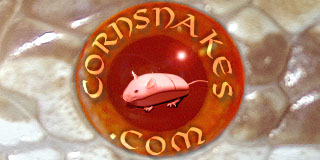Hello all!
I have had a wild-caught, 5-6 long black rat snake (Elaphe obsoleta) since 30 July. It was caught from the wild in the middle of July. I am babysitting it until December for a friend who can't care for it at the moment. My hunch is that something is wrong with it, but I am categorically not a snake keeper so I don't know what that could be. I thought I'd write to you to see if you could help me or point me in the right direction.
It (or "she," since it has a feminine name) is in a 50 gallon reptile tank (the kind with plastic grates built into the side for airflow) on sand, with two hidies, a large container of water, apple branches, and a heat lamp on one side of the tank which keeps that side at around 84°F/29°C, and the cool end is around 72°F/22°C.
I have taken it out to feed it about once a week, but she has only eaten once, and not very enthusiastically, it seems (I'm also keeping this friends's corn snake and that snake lunges at its prey and very happily takes food). Most of the times I have attempted to feed this snake, though, it curls up and sits in the feeding bin and doesn't really move. In desperation, I've even tried leaving the snake in the feeding bin over night with the food, but to no avail. I have also tried feeding her in her own cage, but again to no avail. Meanwhile, the other snake (in a separate but similar cage) eats happily.
I heard that dipping the food into chicken noodle soup or rubbing it in dirty (mouse) bedding helps, but that hasn't helped either. I also tried using a fresh hen's egg (harvested that same day), but the snake wouldn't eat that, either.
For the past week or so, it has had foggy eyes, which I understand is a clue that it will be shedding soon, but she hasn't done anything except lay in one of the houses, curled up. I know it's alive because if I prod around in the cage it flicks her tongue, but doesn't really move much. I don't know if it's possible that not eating properly is related to the foggy eyes, or if either is related to being recently wild-caught.
In general, I'd describe this snake as "lethargic." Whereas the corn snake comes out, sniffs around, climbs the branches, and just seems "lively" in general, this snake lays still and doesn't move, and doesn't seem to be in as good condition.
My friend didn't have the snake long enough to really get a sense of what was "normal" before she suddenly had to part with it, and so I'm left with trying to figure out what is wrong on my own. I have very little snake experience and 0 wild-caught snake experience before this.
Do any of you have ideas?
I have had a wild-caught, 5-6 long black rat snake (Elaphe obsoleta) since 30 July. It was caught from the wild in the middle of July. I am babysitting it until December for a friend who can't care for it at the moment. My hunch is that something is wrong with it, but I am categorically not a snake keeper so I don't know what that could be. I thought I'd write to you to see if you could help me or point me in the right direction.
It (or "she," since it has a feminine name) is in a 50 gallon reptile tank (the kind with plastic grates built into the side for airflow) on sand, with two hidies, a large container of water, apple branches, and a heat lamp on one side of the tank which keeps that side at around 84°F/29°C, and the cool end is around 72°F/22°C.
I have taken it out to feed it about once a week, but she has only eaten once, and not very enthusiastically, it seems (I'm also keeping this friends's corn snake and that snake lunges at its prey and very happily takes food). Most of the times I have attempted to feed this snake, though, it curls up and sits in the feeding bin and doesn't really move. In desperation, I've even tried leaving the snake in the feeding bin over night with the food, but to no avail. I have also tried feeding her in her own cage, but again to no avail. Meanwhile, the other snake (in a separate but similar cage) eats happily.
I heard that dipping the food into chicken noodle soup or rubbing it in dirty (mouse) bedding helps, but that hasn't helped either. I also tried using a fresh hen's egg (harvested that same day), but the snake wouldn't eat that, either.
For the past week or so, it has had foggy eyes, which I understand is a clue that it will be shedding soon, but she hasn't done anything except lay in one of the houses, curled up. I know it's alive because if I prod around in the cage it flicks her tongue, but doesn't really move much. I don't know if it's possible that not eating properly is related to the foggy eyes, or if either is related to being recently wild-caught.
In general, I'd describe this snake as "lethargic." Whereas the corn snake comes out, sniffs around, climbs the branches, and just seems "lively" in general, this snake lays still and doesn't move, and doesn't seem to be in as good condition.
My friend didn't have the snake long enough to really get a sense of what was "normal" before she suddenly had to part with it, and so I'm left with trying to figure out what is wrong on my own. I have very little snake experience and 0 wild-caught snake experience before this.
Do any of you have ideas?
